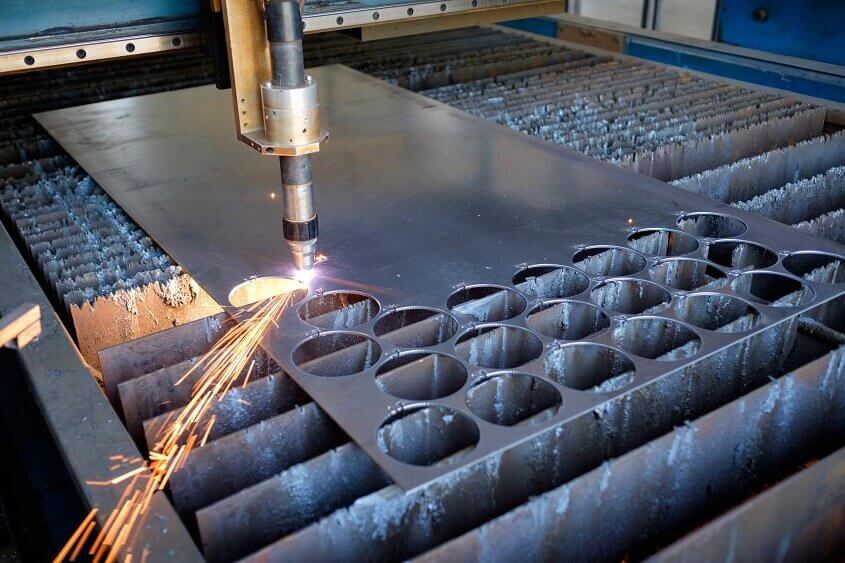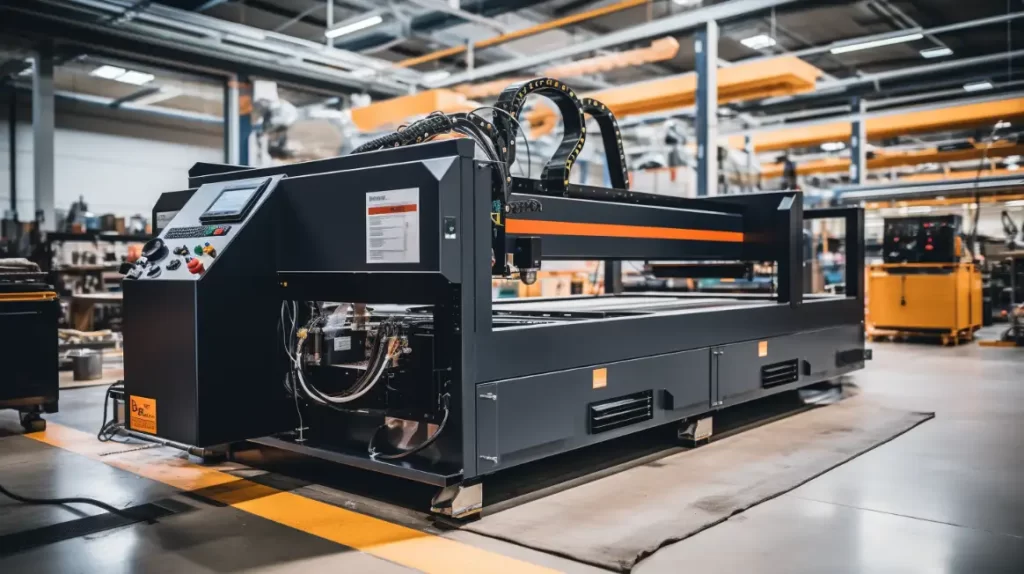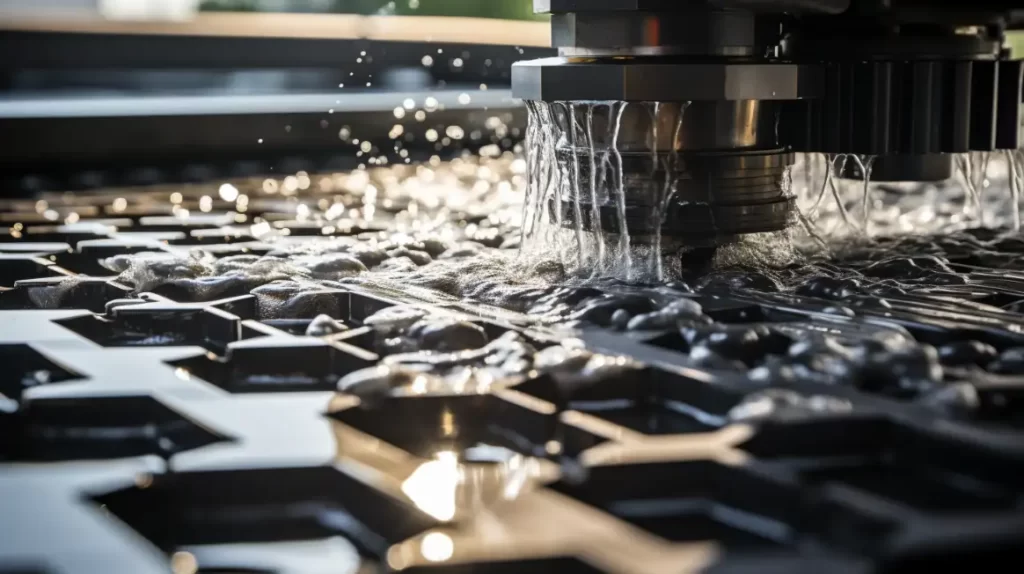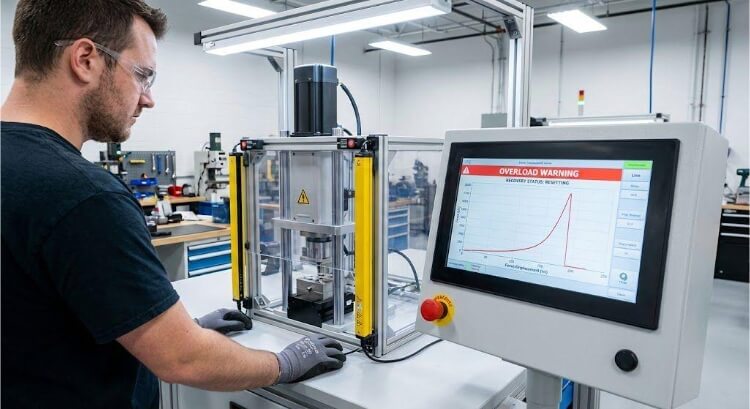Many shops require fast and clean metal cutting. But high precision often comes with a high cost. Plasma cutting offers a solution—but does it meet the needs of small and mid-size manufacturers? Let’s take a closer look at how this technology works, where it shines, and where it falls short. If you’ve been unsure whether plasma cutting fits your production needs, this article will break it down step by step.
If you’re looking for quick cuts, low cost, and no special tooling, this method may be suitable for you. Let’s see why many shops use plasma—and when they don’t.
What is Plasma Cutting?
Plasma cutting is a thermal cutting process. It uses a stream of hot plasma to cut through metal. The machine pushes compressed gas through a small nozzle. At the same time, an electric arc heats the gas until it turns into plasma. This plasma is hot enough to melt metal.
The melted metal is blown away by the gas, leaving a clean cut. Operators can use either a CNC machine or a hand-held torch to guide the cut. Plasma cutting is most effective on steel, stainless steel, and aluminum. It’s faster than many other cutting methods.
Plasma is known as the fourth state of matter. It forms when gas gets very hot. At high temperatures, the gas molecules break apart into ions and electrons. These charged particles can carry electric current.
The electric current is what changes the gas into plasma. The arc flows from the torch to the metal, completing a circuit. As the gas passes through this arc, it heats up and becomes ionized.
Once the gas turns into plasma, the temperature can go above 20,000°C. At this point, it can easily melt most metals. The gas also helps remove the melted metal from the cut.
Plasma Cutting Process Explained Step-by-Step
Plasma cutting follows a clear and straightforward process. Each step helps create fast and accurate cuts on metal.
Starting the Arc
The process begins when the operator presses the torch trigger. This creates a high-frequency spark near the nozzle. At the same time, gas starts flowing out of the torch tip.
The spark turns the gas into plasma and forms what’s called a pilot arc. This arc jumps from the electrode to the nozzle. Once the arc touches the metal, it shifts to the metal surface and becomes the cutting arc.
Cutting Phase
After the arc transfers to the metal, the cutting begins. The plasma jet reaches full strength. The superheated gas melts the metal right where the arc touches it.
The force of the gas pushes the melted metal away. The torch moves along the path, cutting through the metal. The nozzle helps keep the arc focused so the cut stays narrow and clean.
Piercing and Finishing the Cut
When starting on a solid sheet, the torch begins above the metal. It fires the arc straight down until it breaks through the surface. Once it does, the torch moves forward along the path.
At the end of the cut, the operator slows down. This helps prevent rough edges or leftover metal at the exit point. The arc stops when the cut is finished or when the trigger is released.
Post-Cut Clean-Up
Plasma cutting can create a heat-affected zone (HAZ) around the cut edge. Some materials may also leave behind slag or dross on the underside.
In some cases, operators need to grind or sand these spots. But in many jobs, cleanup isn’t required. The final result depends on how well the torch is set up, how the gas flows, the cutting speed, and the type of material.

Materials Suitable for Plasma Cutting
Plasma cutting works on any material that conducts electricity. The most common materials include various metals used in industrial and fabrication work.
Carbon Steel
Carbon steel is one of the most widely cut materials using plasma. It conducts electricity well and melts cleanly under the plasma arc. The cut is fast and smooth, especially on thin to medium-thickness plates.
Stainless Steel
Stainless steel also responds well to plasma cutting. It creates a clean cut without much slag. It’s ideal for applications that don’t need a polished finish or extreme accuracy.
Aluminum and Other Non-Ferrous Metals
Aluminum cuts easily with plasma. However, it requires careful setup due to its low melting point and high heat conductivity. Other non-ferrous metals, such as brass and copper, can also be cut, but the results vary. These metals reflect heat and may require more power and slower speeds.
Thickness Capabilities and Cutting Speeds
Plasma cutting handles a wide range of thicknesses. The power level of the machine affects both the thickness and speed of cutting.
Best Use Range for Material Thickness
Low-power plasma cutters are well-suited for cutting thin sheets, typically up to about 1/4 inch thick. These machines are standard in small shops and for light fabrication.
Mid-range machines can cut steel up to 1 inch. They strike a balance between speed and accuracy and are often used in industrial settings.
High-power systems can handle 2 inches or more in diameter. These are used in heavy equipment, shipbuilding, and extensive structural work.
Speed vs. Cut Quality Trade-offs
Cutting speed affects edge quality. Faster speeds reduce heat build-up but may leave a rougher edge. Slower speeds create smoother cuts, but they also increase the heat-affected zones.
Operators often test different speeds to find the right balance. Clean cuts need the correct settings for gas flow, arc voltage, and travel speed.

Advantages of Plasma Cutting
Plasma cutting offers many benefits for metal fabrication. It’s fast, flexible, and suitable for a wide range of applications.
High Cutting Speed
Plasma cutting is much faster than oxy-fuel or mechanical cutting methods. It can cut thin to medium-thick metals in seconds. This speed boosts productivity and lowers labor time.
Versatility in Material Cutting
Plasma works on any conductive metal. It performs well across a range of materials and thicknesses.
Clean and Precise Cuts
Plasma creates a narrow kerf and sharp edges. With the correct settings, there’s little to no slag. The cuts need minimal post-processing.
Cost-Effectiveness for Industrial Use
Compared to laser or waterjet systems, plasma machines are more affordable. They also require less maintenance. Operating costs are low, and consumables are widely available.
Disadvantages of Plasma Cutting
Plasma cutting is an efficient process, but it comes with inevitable trade-offs. These need to be considered before choosing it for a project.
Limitations in Material Thickness
Plasma works best on thin to medium-thick metals. At the same time, high-power systems can cut thicker plates, resulting in lower edge quality.
Initial Equipment Costs
While cheaper than laser systems, plasma machines still require a sizable investment. High-performance models, CNC tables, and air compressors can raise setup costs.
Safety Concerns and Hazards
Plasma cutting creates intense heat, light, and noise. It also produces fumes and sparks, which require proper safety controls.

Choosing the Right Plasma Cutter
Selecting the right machine depends on your work needs. Think about what materials you cut and how often you use the cutter.
Cutting Capacity
Match the cutter’s power to the thickness of the materials you handle. A small cutter is suitable for working with sheet metal and thin plates. Larger machines are capable of handling thicker steel and aluminum.
Overworking a low-power machine can reduce cut quality and wear out parts faster. It’s better to choose a cutter with slightly more capacity than you need.
Duty Cycle
The duty cycle tells you how long the cutter can run without overheating. For example, a 60% duty cycle at 40 amps means the machine can cut for 6 out of 10 minutes.
A higher duty cycle is better for long jobs or frequent use. Industrial shops should pick models with high-duty ratings.
Portability
Suppose you move between job sites; portability matters. Compact, lightweight cutters are easier to carry and store.
Look for machines with handles, wheels, or built-in air compressors. These features make setup quicker and reduce the need for extra equipment.
Conclusion
Plasma cutting is a fast and reliable method for cutting conductive metals. It works well on carbon steel, stainless steel, and aluminum. It offers high cutting speed, low operating cost, and easy setup. It’s great for thin to mid-thickness materials.
Need help selecting the proper cutting method or looking for a trusted metal fabrication partner? Contact our team today to discuss your project and get a fast quote.
Hey, I'm Kevin Lee

For the past 10 years, I’ve been immersed in various forms of sheet metal fabrication, sharing cool insights here from my experiences across diverse workshops.
Get in touch

Kevin Lee
I have over ten years of professional experience in sheet metal fabrication, specializing in laser cutting, bending, welding, and surface treatment techniques. As the Technical Director at Shengen, I am committed to solving complex manufacturing challenges and driving innovation and quality in each project.




